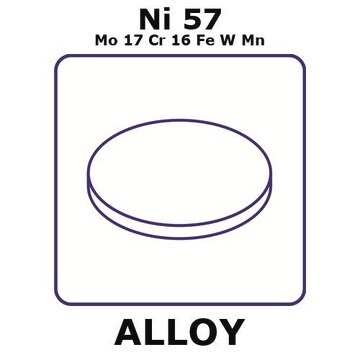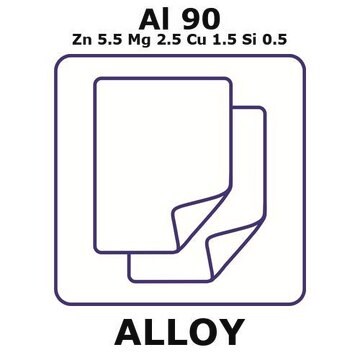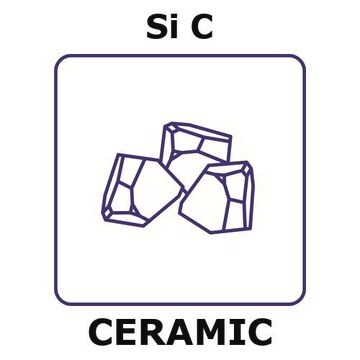GF66886521
Aluminum
microfoil, disks, 50mm, thinness 0.1μm, specific density 25.6μg/cm2, permanent mylar 3.5μm support, 99.999%
Synonym(s):
Aluminum, AL004500
About This Item
Recommended Products
Assay
99.999%
form
foil
autoignition temp.
1400 °F
manufacturer/tradename
Goodfellow 668-865-21
resistivity
2.6548 μΩ-cm
diam. × thickness
50 mm × 0.1 μm
bp
2460 °C (lit.)
mp
660.37 °C (lit.)
density
2.7 g/mL at 25 °C (lit.)
SMILES string
[Al]
InChI
1S/Al
InChI key
XAGFODPZIPBFFR-UHFFFAOYSA-N
General description
Legal Information
Storage Class Code
11 - Combustible Solids
WGK
WGK 3
Flash Point(F)
Not applicable
Flash Point(C)
Not applicable
Regulatory Listings
Regulatory Listings are mainly provided for chemical products. Only limited information can be provided here for non-chemical products. No entry means none of the components are listed. It is the user’s obligation to ensure the safe and legal use of the product.
ISHL Notified Names
Substances Subject to be Notified Names
JAN Code
GF66886521-1EA:
GF66886521-5EA:
GF66886521-2EA:
GF66886521-10EA:
Choose from one of the most recent versions:
Certificates of Analysis (COA)
Sorry, we don't have COAs for this product available online at this time.
If you need assistance, please contact Customer Support.
Already Own This Product?
Find documentation for the products that you have recently purchased in the Document Library.
Our team of scientists has experience in all areas of research including Life Science, Material Science, Chemical Synthesis, Chromatography, Analytical and many others.
Contact Technical Service






